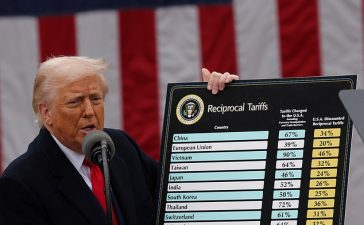
Though this budget is interim for 2024-25, the intention is longer-term, with the aspiration of a developed India in 2047. Since 2014, the Modi government has redefined inclusion to mean empowerment, rather than entitlement, and there is evidence – multi-dimensional poverty being one – to show this works. The interim budget sticks to this template of welfarism, with specific focus on the poor, women, youth and farmers. Add to that the continuing focus on sustainable development (rooftop solarisation was announced a few days ago) and capex (railway corridors, airports, metro rail).
Given the necessary emphasis on fiscal consolidation, the moot question was whether the budget arithmetic would permit capex to continue. In 2024-25, capex/GDP ratio is expected to be 3.4%, a healthy enough number. This, despite the fiscal consolidation message being clear enough.
In 2021-22, FM Nirmala Sitharaman announced a fiscal deficit/GDP ratio of 4.5% in 2025-26. But there was Covid and a deviation. In RE 2023-24, the ratio is 5.8%. A reduction of 1.3% in two years is difficult, though not impossible. To get to that terminal goal of 4.5%, BE 2024-25 projects 5.1%, a shade on the optimistic side, but not impossible.
There is near-consensus that real growth in 2024-25 will be 7%, or marginally lower. Hence, the nominal growth assumption of 10.5% is reasonable enough. Disinvestment/privatisation has flagged. But if taken up after the elections, receipts could be much more than the projected ₹50,000 crore. One can’t pick holes in the numbers and Sitharaman’s budgets have increasingly become transparent, with no sleight of hand.Though this was an interim budget, there were expectations about tax concessions and relief. Nothing of the sort has happened, and she had suggested as much before the budget. Morally, if not legally, tax (and major expenditure) changes should be left to the incoming government later this year. (If you think about it, there are no new expenditure proposals in the interim budget either – existing schemes are re-emphasised.)On direct taxes, Sitharaman’s speech gave an interesting figure. Outstanding tax demands up to ₹25,000 and ₹28,000 (depending on the year) will be withdrawn. ‘This is expected to benefit about a crore taxpayers,’ she said. 10 million is a large number, highlighting compliance costs and litigation. Reduction in either is a function of simplification and reduction in exemptions.There are already two channels (separately for personal income-tax payees and corporates), one with fewer (not zero) exemptions than the other. While some have opted for the new system, the shift can be incentivised further. However, that will have to wait for the full budget. Pending simplification and harmonisation of GST, routed through GST Council, too, will have to wait till then.
It is unfair to load an interim budget with the burden of our expectations. But what it has done, given that the political composition of the next government is likely to be the same, is indicative what the full budget might be like. The new government will be for 2024-29. During this period, India’s economy should cross the threshold of $5 trillion of GDP, making it the third largest in the world.
Recently, DEA’s review of the Indian economy spoke about the timeline for $7 trillion by 2030. 2024 is also roughly halfway between 2000 and 2030. Thus, the full budget for 2024-25 will importantly provide medium-term fiscal strategy and factor in anticipated recommendations of 16th Finance Commission. The interim budget gives us pointers.
While some may have hoped for a sprinkle of fiscal fairy dust of freebies, this budget is more like a steadfast sherpa, guiding the economy through the thin air of financial challenges with a steady hand and clear vision.










